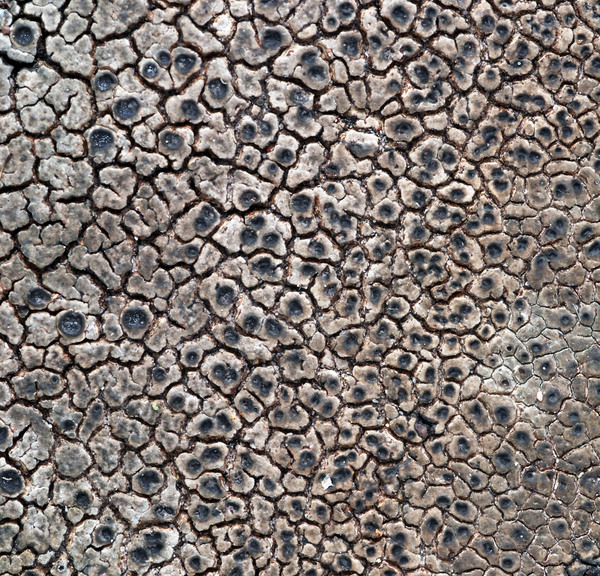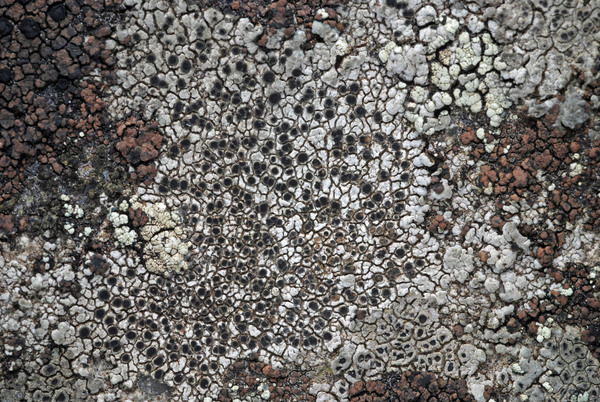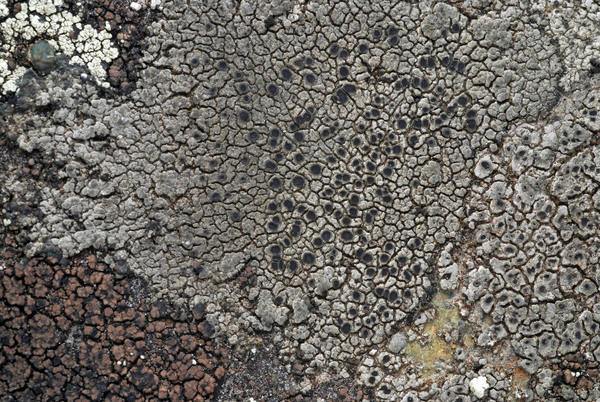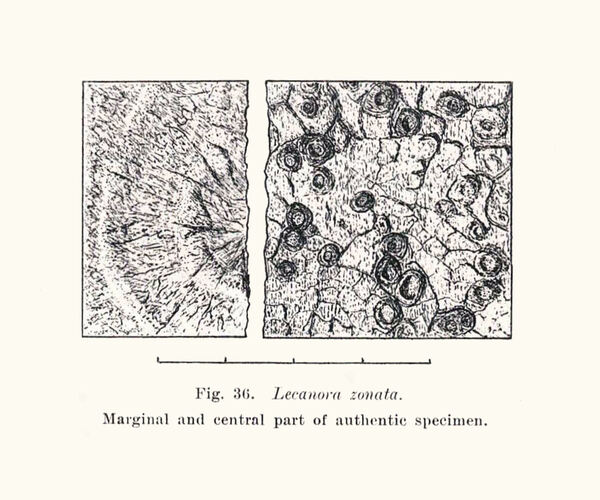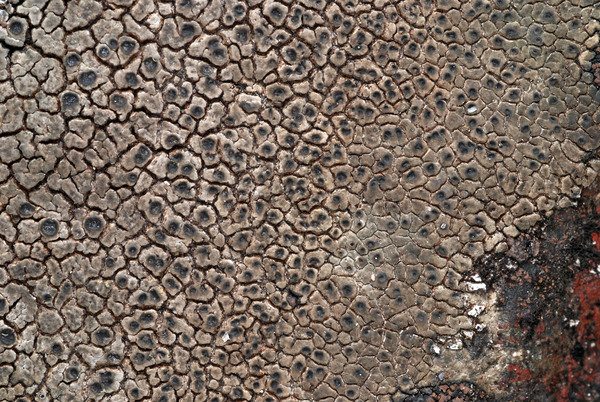Sagedia zonata Ach.
K. Vetensk-Akad. Nya Handl., 30: 165, 1809.
Synonyms: Aspicilia inconspicua (H. Magn.) Räsänen; Aspicilia litorea (H. Magn.) Räsänen; Aspicilia malmeana (H. Magn.) Ozenda & Clauzade; Aspicilia obscurascens (H. Magn.) Clauzade & Rondon; Aspicilia rolleana Hue; Aspicilia tenebrica; Aspicilia waldrastensis (H. Magn.) Clauzade & Rondon; Aspicilia zonata (Ach.) R. Sant.; Lecanora haerjedalica H. Magn.; Lecanora inconspicua H. Magn.; Lecanora litorea H. Magn.; Lecanora malmeana H. Magn.; Lecanora obscurascens H. Magn.; Lecanora pleiocarpa H. Magn.; Lecanora rolleana (Hue) Zahlbr.; Lecanora tenebrica H. Magn.; Lecanora tromsoënsis H. Magn.; Lecanora waldrastensis H. Magn.; Lecanora xyloxena H. Magn.
Distribution: N - TAA (Nascimbene & al. 2022), Emil (Fariselli & al. 2020).
Description: Thallus crustose, episubstratic, dark grey-brown, often with a greenish or bluish hue, sometimes forming 1-2.5 mm broad concentric rings where the whitish to dark grey hypothallus is visible, irregularly rimose-areolate, the areoles 0.2-1 mm wide, flat to convex, smooth to verrucose, 0.2-0.4 mm thick. Cortex 25-35 µm thick, reddish brown in upper part; medulla white, I-. Apothecia lecanorine-aspicilioid, 0.2-0.7(-1) mm across, usually of different sizes in the same thallus, often crowded, immersed in convex areoles or somewhat raised, 1-4 per areole, with a concave to flat, black, sometimes slightly pruinose disc, a thin but prominent thalline margin and a distinct, black parathecial ring. Proper exciple to 50 µm thick, olivaceous brown in outer part, I+ pale blue; epithecium olive-brown to dark green, N+ emerald green, K+ brownish; hymenium colourless, 80-100 µm high, I+ yellowish green; paraphyses sparingly branched, anastomosing, submoniliform in upper part, 1.5-2 µm thick at mid-level, the apical cells up to 3.5 µm wide; hypothecium colourless, c. 35 µm high, I+ pale blue. Asci 8-spored, clavate, the thin outer coat K/I+ blue, the wall and the apical dome K/I-. Ascospores 1-celled, hyaline, broadly ellipsoid, (14-)17-20(-24) x 7-13(-15) µm. Pycnidia immersed, flask-shaped, with a dark punctiform ostiole. Conidia bacilliform, straight or rarely curved, 7-8 x c. 1 µm. Photobiont chlorococcoid. Spot tests: cortex and medulla K-, C-, KC-, P-, UV-. Chemistry: without lichen substances.
Note: this species has been frequently confused with Circinaria caesiocinerea, from which it differs in the 8-spored asci, the slightly smaller spores, and the absence of aspiciliin. It grows on siliceous rocks in the montane-subalpine belts. Several records of C. caesiocinerea from upland areas, especially from the Alps, could refer to this species. For the synonymies I follow Roux & coll. (2014).
Growth form: Crustose
Substrata: rocks
Photobiont: green algae other than Trentepohlia
Reproductive strategy: mainly sexual
Poorly known taxon in need of further study
Commonnes-rarity: (info)
Alpine belt: very rare
Subalpine belt: very rare
Oromediterranean belt: absent
Montane belt: extremely rare
Submediterranean belt: absent
Padanian area: absent
Humid submediterranean belt: absent
Humid mediterranean belt: absent
Dry mediterranean belt: absent

Predictive model
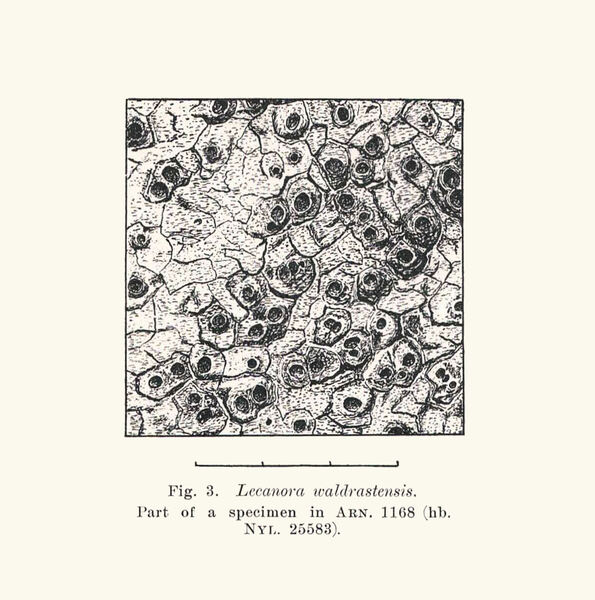
Magnusson A. H. 1939. Studies in species of Lecanora, mainly the Aspicilia gibbosa group. Kungl. Svenska Vetenskaps-Akademiens Handlingar, ser. III, 17, .5: 1-182.
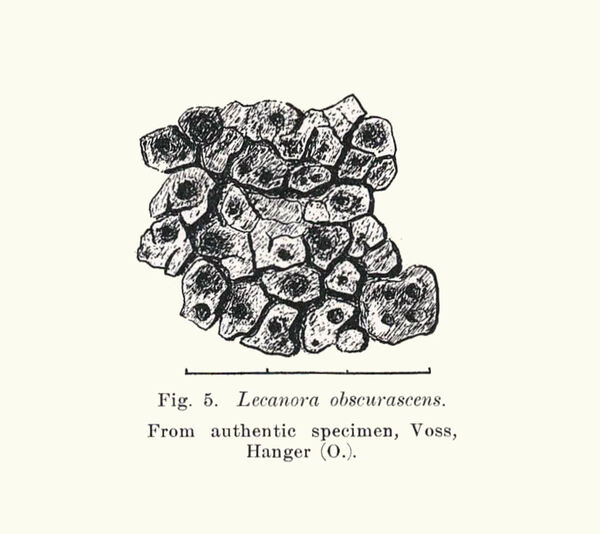
Magnusson A. H. 1939. Studies in species of Lecanora, mainly the Aspicilia gibbosa group. Kungl. Svenska Vetenskaps-Akademiens Handlingar, ser. III, 17, .5: 1-182.
Growth form: Crustose
Substrata: rocks
Photobiont: green algae other than Trentepohlia
Reproductive strategy: mainly sexual
Poorly known taxon in need of further study
Commonnes-rarity: (info)
Alpine belt: very rare
Subalpine belt: very rare
Oromediterranean belt: absent
Montane belt: extremely rare
Submediterranean belt: absent
Padanian area: absent
Humid submediterranean belt: absent
Humid mediterranean belt: absent
Dry mediterranean belt: absent

Predictive model

Magnusson A. H. 1939. Studies in species of Lecanora, mainly the Aspicilia gibbosa group. Kungl. Svenska Vetenskaps-Akademiens Handlingar, ser. III, 17, .5: 1-182.

 INDEX FUNGORUM
INDEX FUNGORUM
 GBIF
GBIF
 DOLICHENS
DOLICHENS
